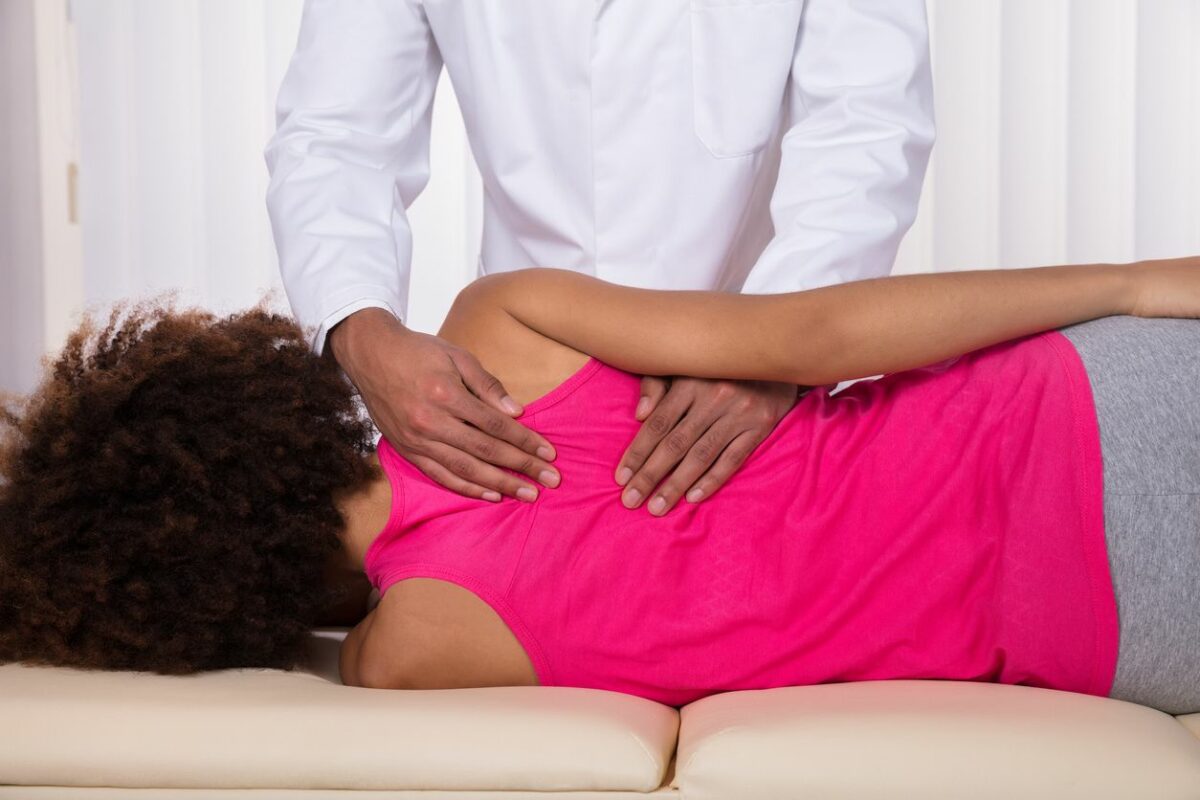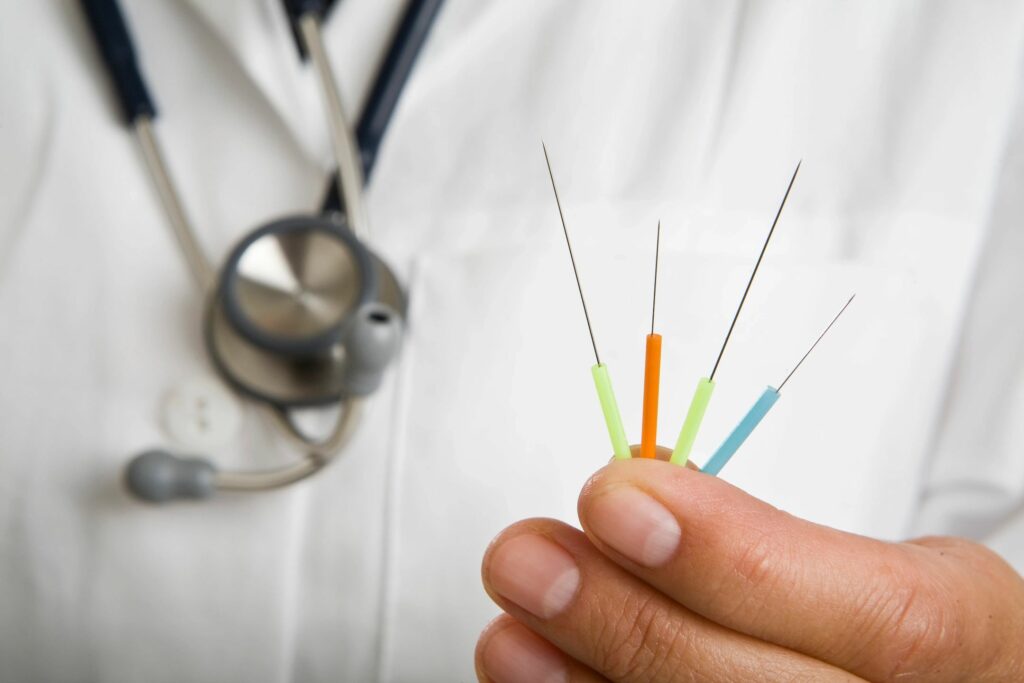What is Active Release Technique (ART)?
Every ART® session is actually a combination of examination and treatment. The ART® provider uses his or her hands to evaluate the texture, tightness and movement of muscles, fascia, tendons, ligaments and nerves. Abnormal tissues are treated by combining precisely directed tension with very specific patient movements.
These treatment protocols - over 500 specific moves - are unique to ART®. They allow providers to identify and correct the specific problems that are affecting each individual patient. ART® is not a cookie-cutter approach.
How do overuse conditions occur?
Over-used muscles (and other soft tissues) change in three important ways:
- acute conditions (pulls, tears, collisions, etc)
- accumulation of small tears (micro-trauma)
- not getting enough oxygen (hypoxia)
Each of these factors can cause your body to produce tough, dense scar tissue in the affected area. This scar tissue binds up and ties down tissues that need to move freely. As scar tissue builds up, muscles become shorter and weaker, tension on tendons causes tendonitis, and nerves can become trapped. This can cause reduced range of motion, loss of strength, and pain. If a nerve is trapped you may also feel tingling, numbness, and weakness.



Q&A from the American Chiropractic Association
Q: What conditions do chiropractors treat?
A: Doctors of Chiropractic (DCs) care for patients of all ages, with a variety of health conditions. DCs are especially well known for their expertise in caring for patients with back pain, neck pain and headaches...particularly with their highly skilled manipulations or chiropractic adjustments. They also care for patients with a wide range of injuries and disorders of the musculoskeletal system, involving the muscles, ligaments and joints. These painful conditions often involve or impact the nervous system, which can cause referred pain and dysfunction distant to the region of injury. DCs also counsel patients on diet, nutrition, exercise, healthy habits, and occupational and lifestyle modification.
Q: Is chiropractic treatment safe?
A: Chiropractic is widely recognized as one of the safest drug-free, non-invasive therapies available for the treatment of neuromusculoskeletal complaints. Although chiropractic has an excellent safety record, no health treatment is completely free of potential adverse effects. The risks associated with chiropractic, however, are very small. Many patients feel immediate relief following chiropractic treatment, but some may experience mild soreness, stiffness or aching, just as they do after some forms of exercise. Current research shows that minor discomfort or soreness following spinal manipulation typically fades within 24 hours.
Neck pain and some types of headaches are treated through precise cervical manipulation. Cervical manipulation, often called a neck adjustment, works to improve joint mobility in the neck, restoring range of motion and reducing muscle spasm, which helps relieve pressure and tension. Neck manipulation, when performed by a skilled and well-educated professional such as a doctor of chiropractic, is a remarkably safe procedure.
Some reports have associated high-velocity upper neck manipulation with a certain rare kind of stroke, or vertebral artery dissection. However, evidence suggests that this type of arterial injury often takes place spontaneously in patients who have pre-existing arterial disease. These dissections have been associated with everyday activities such as turning the head while driving, swimming, or having a shampoo in a hair salon. Patients with this condition may experience neck pain and headache that leads them to seek professional care—often at the office of a doctor of chiropractic or family physician—but that care is not the cause of the injury. The best evidence indicates that the incidence of artery injuries associated with high-velocity upper neck manipulation is extremely rare—about one to three cases in 100,000 patients who get treated with a course of care. This is similar to the incidence of this type of stroke among the general population.
If you are visiting your doctor of chiropractic with upper-neck pain or headache, be very specific about your symptoms. This will help your doctor of chiropractic offer the safest and most effective treatment, even if it involves referral to another health care provider.
Doctors of chiropractic are well trained professionals who provide patients with safe, effective care for a variety of common conditions. Their extensive education has prepared them to identify patients who have special risk factors and to get those patients the most appropriate care, even if that requires referral to a medical specialist.
Q: Is chiropractic treatment appropriate for children?
A: Yes, children can benefit from chiropractic care. Children are very physically active and experience many types of falls and blows from activities of daily living as well as from participating in sports. Injuries such as these may cause many symptoms including back and neck pain, stiffness, soreness or discomfort. Chiropractic care is always adapted to the individual patient. It is a highly skilled treatment, and in the case of children, very gentle.
Q: Does chiropractic treatment require a referral from an MD?
A: A referral is usually not needed to see a doctor of chiropractic (DC); however, your health plan may have specific referral requirements. You may want to contact your employer’s human resources department—or the insurance plan directly—to find out if there are any referral requirements. Most plans allow you to just call and schedule an appointment with a DC.
Q: Do insurance plans cover chiropractic?
A: Yes. Chiropractic care is included in most health insurance plans, including major medical plans, workers’ compensation, Medicare, and Blue Cross Blue Shield plans for federal employees, among others. Chiropractic care is also available to active-duty members of the armed forces at more than 60 military bases and is available to veterans at more than 60 major veterans medical facilities.
Q: What type of education and training do chiropractors have?
A: Doctors of chiropractic are educated as primary-contact health care providers, with an emphasis on diagnosis and treatment of conditions related to the musculoskeletal system (the muscles, ligaments and joints of the spine and extremities) and the nerves that supply them. Educational requirements for doctors of chiropractic are among the most stringent of any of the health care professions. The typical applicant for chiropractic college has already acquired nearly four years of pre-medical undergraduate college education, including courses in biology, inorganic and organic chemistry, physics, psychology and related lab work. Once accepted into an accredited chiropractic college, the requirements become even more demanding — four to five academic years of professional study are the standard. Doctors of chiropractic are educated in orthopedics, neurology, physiology, human anatomy, clinical diagnosis including laboratory procedures, diagnostic imaging, exercise, nutrition rehabilitation and more. Because chiropractic care includes highly skilled manipulation/adjusting techniques, a significant portion of time is spent in clinical technique training to master these important manipulative procedures. In total, the chiropractic college curriculum includes a minimum of 4,200 hours of classroom, laboratory and clinical experience. The course of study is approved by the Council on Chiropractic Education, an accrediting agency that is fully recognized by the U.S. Department of Education.
Q: How is a chiropractic adjustment performed?
A: Chiropractic adjustment or manipulation is a manual procedure that utilizes the highly refined skills developed during the doctor of chiropractic’s intensive years of chiropractic education. The chiropractic physician typically uses his or her hands--or an instrument--to manipulate the joints of the body, particularly the spine, in order to restore or enhance joint function. This often helps resolve joint inflammation and reduces the patient's pain. Chiropractic manipulation is a highly controlled procedure that rarely causes discomfort. The chiropractor adapts the procedure to meet the specific needs of each patient. Patients often note positive changes in their symptoms immediately following treatment.
Q: Is chiropractic treatment ongoing?
A: The hands-on nature of the chiropractic treatment is essentially what requires patients to visit the chiropractor a number of times. To be treated by a chiropractor, a patient needs to be in his or her office. In contrast, a course of treatment from medical doctors often involves a pre-established plan that is conducted at home (i.e. taking a course of antibiotics once a day for a couple of weeks). A chiropractor may provide acute, chronic, and/or preventive care thus making a certain number of visits sometimes necessary. Your doctor of chiropractic should tell you the extent of treatment recommended and how long you can expect it to last.
Q: Why is there a popping sound when a joint is adjusted?
A: Adjustment (or manipulation) of a joint may result in the release of a gas bubble between the joints, which makes a popping sound. The same thing occurs when you “crack” your knuckles. The noise is caused by the change of pressure within the joint, which results in gas bubbles being released. There is usually minimal, if any, discomfort involved.
What is acupuncture?
Acupuncture is a holistic health technique that stems from Traditional Chinese Medicine practices in which trained practitioners stimulate specific points on the body by inserting thin needles into the skin.
Today acupuncture is one of the most popular practices of Traditional Chinese Medicine (TCM) in the United States. TCM is a complimentary health approach that first originated in ancient China more than 2,500 years ago and has been evolving ever since.
The first question most people ask, “Does acupuncture hurt?”
Surprisingly, although needles are used in acupuncture, treatments are relatively pain-free. In fact, one of the most popular uses of acupuncture is to reduce chronic pain throughout the body in a natural way, without the need for medications that can cause unwanted side effects.
What Is Acupuncture Able to Treat?
Acupuncture is used to treat conditions like:
- muscle spasms and pain
- chronic back problems and pain
- headaches, including reducing the frequency and intensity of migraines
- neck pain
- osteoarthritis
- knee pain
- allergies
- digestive problems
- mood, depression
The U.S Department of Health and Human Services states that,
… promising results have emerged showing efficacy of acupuncture in adult postoperative and chemotherapy nausea and vomiting, and in postoperative dental pain. There are other situations such as addiction, stroke rehabilitation, headache, menstrual cramps, tennis elbow, fibromyalgia, myofascial pain, osteoarthritis, low back pain, carpal tunnel syndrome, and asthma, in which acupuncture may be useful as an adjunct treatment. (2)
Acupuncture Points
Acupuncture points are specific locations on the body that are the focus of acupuncture treatments. TCM explains acupuncture as a technique for “balancing the flow of energy or life force,” and that energy can be reached by stimulating small specific channels on the body.
TCM practitioners believe that there is an energy flow, known as “qi” or “chi,” that is located in certain “meridians” throughout the body. Chi is thought to be what separates the sick from the healthy — and when chi is not balanced, illness, pain, poor sleep, and fatigue can occur.
- There are 14 major energy-channel meridians on the body, with hundreds of points located along each meridian where acupuncture needles are inserted.
- These include some 360 different points on the hands, arms, feet, head, back and over the major organs. The belief is that by inserting needles lightly into certain points on the body, their energy flow can be tapped into and the patient’s energy can be rebalanced.
- Acupuncture points tend to be located where nerves enter a muscle, the midpoint of a muscle, or at a point where muscle joins with bone.
How Does Acupuncture Work?
All acupuncture practices involve the stimulation of specific points on the body using a variety of techniques, usually needles. The type of acupuncture that has been studied most so far in clinical, scientific research settings is the type that uses thin, solid, metal needles to lightly puncture the skin.
Acupuncture is usually done by hand, with a trained practitioner carefully inserting the needles into specific points in the body very shallowly into the skin. Normally about 10 to 20 thin needles are used at one time. The needles are small enough to fit inside of a normal-sized needle that would be used to take blood, making the process pretty painless for most people.
There are also types of acupuncture that use light electrical stimulations that flow through the needles, or no needles at all. For example, acupressure is often thought of as simply “acupuncture without the needles” and uses targeted massage-type techniques to stimulate energy in the body by pressing on certain points.
What Will I Experience?
An acupuncture session works something like this:
First, the acupuncturist will speak with the patient about their pain and health-related goals.
Then they will usually look at the patient’s tongue and press on their vital organs to see if there is anything noticeable contributing to an imbalance.
The acupuncturist will then use sterile, disposable small needles and will place them along specific “meridians” on the body.
The acupuncturist will check for “pulses” on the body by gently placing their fingers or hand on the patient’s body to feel how the patient’s energy is flowing. Redness can also occur around a needle site, and this is thought to be a sign that as energy is not balanced in that area.
The needles will usually stay in for a short period of time while the patent’s energy is reworking and balancing itself.
After the needles are removed, the patient can go about their day and are usually advised to drink plenty of water in an effort to help the detoxifying process.

